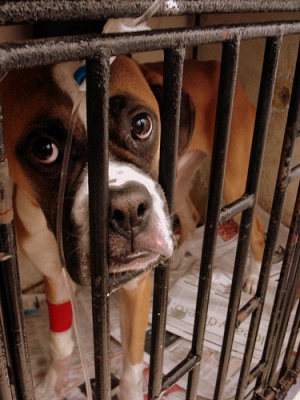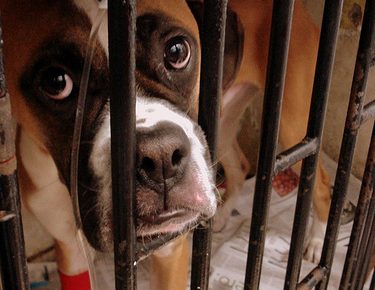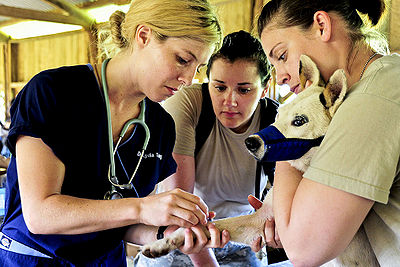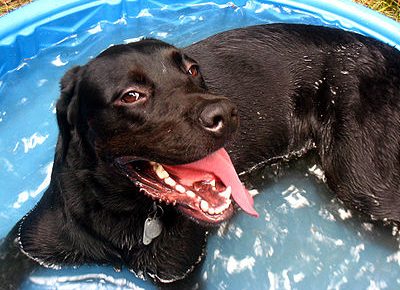
Laryngeal Paralysis usually develops slowly over a period of time. It generally affects older dogs, horses, rarely cats, but can occur in young pets as well. It is usually seen in larger dogs over 40-50 lbs. such as Labrador Retrievers, Golden Retrievers, Siberian Huskies, Newfoundlands and St. Bernards. It appears that Labradors are more prone to the condition. The condition can be congenital in Bouvier des Flandres, Dalmatians, Siberian Huskies and bulldogs and may show up at 2-6 months of age. In horses the condition is called roaring or roarer’s syndrome.
The cartilage at the opening of the trachea (wind pipe) opens when breathing in and relaxes when breathing out. In the beginning stages of laryngeal paralysis, the cartilage can be sucked into the opening. With severe cases, the airway can be completely obstructed and the animal can suffocate.
Early signs of the condition are increased breathing noises, gagging and/or coughing especially after eating or drinking, panting excessively even when relaxed, a deeper, hoarse bark, loud breathing noises. As the paralysis progresses, the pet works harder to breathe, eyes can be prominent, chest expansion more noticeable. The pet will tire more easily even with short bouts of activity such as walking. Pets use breathing to cool themselves and this condition causes your pet to be more prone to overheating.
As the paralysis worsens, your pet will be in obvious distress – tongue can be dark red or purple, signs of anxiousness, breathing harder, noisier sounds. At this point, your pet is in respiratory distress and needs immediate medical attention.
Your veterinarian will treat this emergency by administering oxygen, sedating the pet, intubation and artificial respiration if necessary.
In mild cases, sedatives and corticosteroids may be given. Limited activity and keeping a healthy body weight are recommended. Sometimes the cartilage on only one side of the trachea is affected. Causes of laryngeal paralysis are usually idiopathic (unknown).
Treatment can be surgical correction of the problem. The method presently used is called “Tieback” in which the folds of tissue on either side are pulled back giving a wider opening to allow more air. In laryngeal collapse it’s possible to use a prosthetic muscle and connect it to the paralyzed muscle. There are other procedures available if tieback is not an option. Surgery is usually the last resort.
Your vet may suggest further testing before surgery to assess if any underlying conditions are present. Blood, heart and lungs will be examined carefully. Anesthesia during surgery has to be adjusted according to the pet’s needs.
Post-operative care is very important for success. Things to watch for are pneumonia, infection at the surgical site, loss of voice, coughing after eating or drinking which generally goes away after a short time.
Discuss with the surgeon all options available to treat laryngeal paralysis and any pre- and post-operative care.
Never use choke collars or any collars on dogs suspected of suffering with laryngeal paralysis. Harnesses are the safest equipment for dogs.



